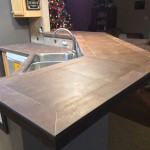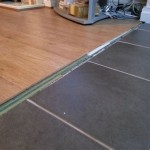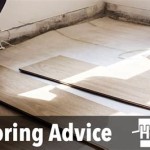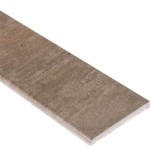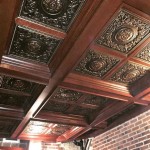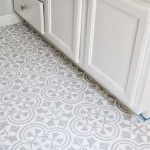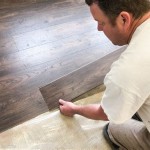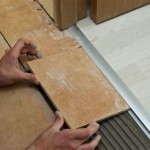Which Side of Cement Board Do You Tile On?
Cement board, also known as backer board, is a crucial component in tile installation, providing a stable and moisture-resistant substrate for your tiles. When working with cement board, a common question arises: which side should you tile on? The answer lies in understanding the purpose and properties of the two sides of this material.
Understanding Cement Board Construction
Cement board is made from a mixture of Portland cement, sand, and fibers. It is typically manufactured in large sheets and comes in various thicknesses. One side of the cement board has a smooth, slightly textured finish, while the other side features a rougher, often dimpled surface. This difference in texture serves a specific purpose in tile installation.
The Smooth Side: For Enhanced Adhesion
The smooth side of the cement board is designed for direct tile application. Its smooth surface provides a consistent and even base for the tile adhesive to bond to. This ensures a strong and secure hold for your tiles, reducing the risk of cracking or loosening over time. The smooth side also promotes even spreading of the adhesive, contributing to a more consistent and aesthetically pleasing tile installation.
The Rough Side: For Moisture Control
The rough side of the cement board is typically designed to face the wall or substrate. Its uneven surface acts as a drainage plane, allowing moisture to escape from behind the tiling system. This is crucial in areas prone to moisture, such as bathrooms and kitchens, where water exposure is common. The rough side helps prevent moisture buildup, which can lead to mold growth and structural damage.
Choosing the Right Side: Factors to Consider
While the smooth side is generally the preferred side for tiling, there are a few factors to consider when making this decision:
1.
Tile Type:
The type of tile being installed can influence the choice of side. For example, large-format tiles or tiles with irregular shapes may benefit from the extra grip offered by the rough side of the cement board. The adhesive will have a better chance of grabbing onto the rough surface, ensuring a strong bond.2.
Moisture Level:
As mentioned earlier, areas with high levels of moisture, such as bathrooms and showers, should utilize the rough side as a drainage plane to prevent moisture buildup. This is particularly important in areas where water exposure is frequent or prolonged.3.
Manufacturer Recommendations:
It is always advisable to check the manufacturer's instructions for your specific cement board. They may provide specific guidance on which side to tile on, taking into account the material's composition and intended application.4.
Professional Advice:
If you are unsure about which side to tile on, seeking advice from a qualified tile installer or contractor is always a good idea. They can provide expert guidance based on your specific project requirements and the local building codes.By understanding the purpose of each side and considering the relevant factors, you can confidently choose the appropriate side of the cement board for your tiling project, ensuring a strong, durable, and moisture-resistant installation.

How To Install Cement Board For Tile Projects Diy Family Handyman

Easily Install Cement Board To Prep For Tile Installation

Easily Install Cement Board To Prep For Tile Installation

How To Install Cement Board The Home Depot

How To Install Cement Board The Home Depot

How To Install Hardiebacker Cement Board On Floors James Hardie Pros

Tile Installation Backer Board Around A Bathtub Family Handyman

How To Install Cement Board The Home Depot

How To Install Cement Backer Board For Floor Tile Installation The Home Depot

How To Install Cement Board In 3 Easy Ways Q2 2024 Infographic
Related Posts

